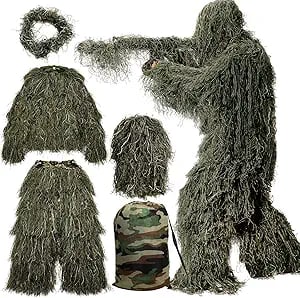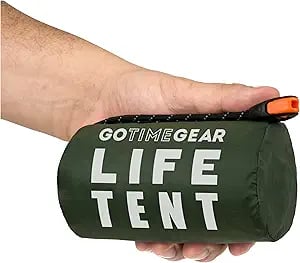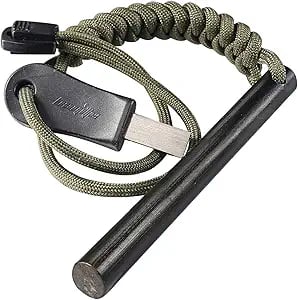How Not to Survive in the Wilderness: Avoid These Survival Mistakes
Discover how not to survive in the wilderness with this humorous guide to survival mistakes. From poor packing to risky shelters, avoid these classic blunders.
SURVIVALSATIRE
As an Amazon Associate, I earn from qualifying purchases. This means I may earn a commission if you click on an affiliate link and make a purchase, at no extra cost to you.
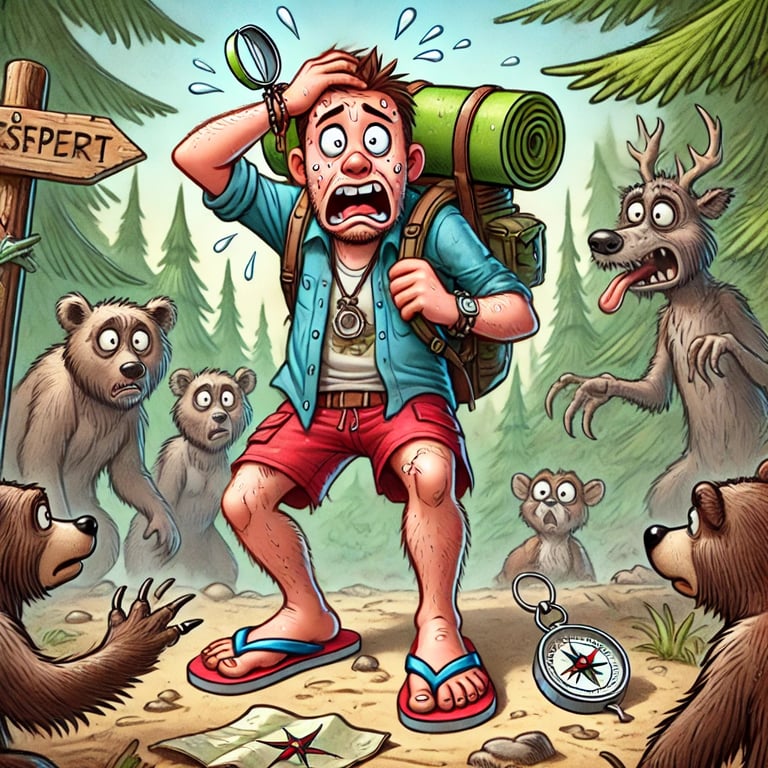

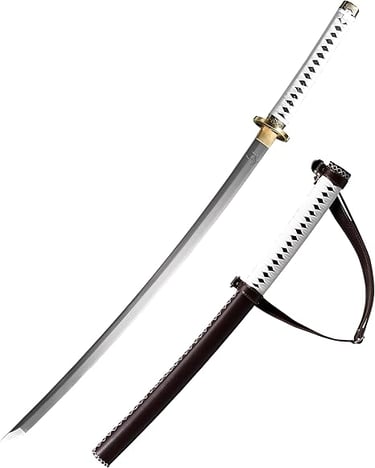

JIHPEN sword,Michonne's Katana The Walking Dead - 40.5in
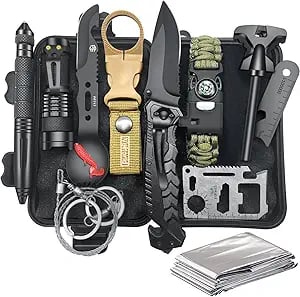

VEITORLD Gifts for Men Dad Him Christmas, Survival Gear and Equipment 12 in 1, Survival Kits, Cool Unique Fishing Hunting Birthday Gift for Husband Teen Boy Boyfriend Women, Stocking Stuffers for Men
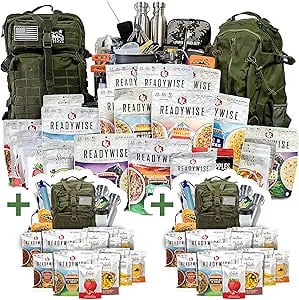

Family Comfort 72 Emergency Survival Kit/Backpack – 72 Hour for 2 People – Disaster Preparedness – Delicious ReadyWise Food, Gear, Lighting, First Aid, Tools & More - Sirius Survival
1. Bring Nothing Useful 🧭
The great outdoors, unlike your bedroom or local library, does not come equipped with instructions, handy maps, or even a friendly librarian who can guide you back to the comfort of civilization. But who needs maps or compasses when you have something much more powerful: your ego. Pack nothing practical and rely solely on the power of your own misguided confidence.
DO THIS INSTEAD: Pack the Essentials
If, by some wild twist of fate, you wish to actually survive your journey, consider bringing a map, a compass, and—perish the thought—a first-aid kit. I understand these items are dreadfully dull and ruin the “rugged” aesthetic, but they can be quite handy if you have any inclination toward finding your way back in one piece.
2. Underestimate Every Possible Hazard 🌩️
It is a well-known fact that nothing bad has ever happened to people who underestimate nature. Just ask anyone who’s taken a stroll in a blizzard or napped next to a beehive. Step forward with reckless abandon, laughing in the face of storm clouds, venomous snakes, and any warning signs that say “DO NOT ENTER: DANGER.”
DO THIS INSTEAD: Respect the Elements
Nature is a tad unpredictable, like a mischievous child with a slingshot or a kindly old lady who turns into a ravenous beast at night. Check the weather forecast, prepare for cold nights even if the day’s warm, and do your best not to provoke anything that hisses, growls, or otherwise threatens you with bodily harm. Your survival rate may increase markedly.
3. Wear the Most Inappropriate Clothing Possible 👟
Choosing your wilderness attire is not about functionality but fashion. Ignore all those tiresome suggestions about “breathable layers” and “supportive footwear.” Instead, find your worst shoes, ideally ones with absolutely no grip, and a cotton shirt that absorbs rain like a sponge. After all, what’s the point of survival if you can’t suffer stylishly?
DO THIS INSTEAD: Dress for the Environment
Though it may ruin your carefully cultivated aesthetic, a sturdy pair of boots and a waterproof jacket are remarkably effective when it comes to survival. While you won’t win any wilderness fashion awards, you may find that dry socks and warm layers make the outdoors slightly more bearable.
4. Eat Everything You Find 🍄
The forest is, to the uninformed eye, an all-you-can-eat buffet, brimming with mushrooms, berries, and odd green leaves that seem to beckon you to sample them. After all, how different can these wild foods be from the things you pick up at the grocery store? Simply close your eyes, take a nibble, and let nature’s flavors—whether they be edible or toxic—take you on a culinary adventure.
DO THIS INSTEAD: Learn Basic Foraging
Survival experts recommend avoiding random snacks from nature’s pantry unless you enjoy symptoms like hallucinations, paralysis, or becoming the subject of tragic wilderness tales. Stick to food you can identify with absolute certainty or, better yet, bring snacks from home. You can’t get food poisoning from trail mix… or so I’m told.
5. Build Campfires Wherever You Please 🔥
The wilderness is clearly in desperate need of a little human influence, so go ahead and build a fire wherever you like. The more flammable the spot, the better! After all, the sight of a roaring fire next to a dry, crackling bush is sure to bring you warmth, excitement, and possibly the local fire department.
DO THIS INSTEAD: Respect Fire Safety
Despite the glamour of spontaneous campfires, it’s generally advisable to keep your blaze contained. Set up your fire in a designated area, use rocks to keep it in check, and never leave it unattended. Extinguish it completely before you sleep or leave. It’s a bit less thrilling, I’ll admit, but it’s also less likely to result in a wildfire—and public humiliation.
6. Drink from Any and Every Water Source 💧
Water flows freely in the wilderness, and it sparkles as it beckons you to drink without question. Of course, to the untrained eye, every river looks like a clean, refreshing stream. Go ahead and dip your hands into the nearest body of water without a second thought—if you’re lucky, you’ll only end up with mild dehydration.
DO THIS INSTEAD: Filter, Filter, Filter
While some might find it less adventurous, consider bringing a portable water filter or purification tablets. Alternatively, boiling water for a few minutes can transform even the murkiest pond into something drinkable. Failing to do so may result in an unplanned expedition to the nearest bush for, let’s say, urgent relief.
7. Pick the Worst Possible Spot for Shelter 🏕
In real estate, they say it’s all about location, location, location. In wilderness survival, it’s more about location, elevation, and perhaps, a sprinkle of common sense. Which is why, to truly embrace your ineptitude, you should select a nice, damp area next to a noisy river. Or better yet, choose a slope where you can spend the night slowly sliding downhill in your sleep.
DO THIS INSTEAD: Choose Wisely
Flat, elevated ground far from water sources is shockingly practical, though less adventurous. Shelter should ideally be located away from animal trails and open to sunlight. If sleeping soundly through the night without fear of being waterlogged or woken by curious critters sounds appealing, give this some thought.
8. Forget to Pack Anything Useful—But Don’t Forget Your Expectations 🧳
In the true spirit of unpreparedness, pack only your unrealistic expectations and leave everything else behind. The wilderness, after all, is bound to provide for you. Surely, food will sprout at your feet, a spring will bubble up at your command, and an adorable rabbit will bring you firewood, if you ask nicely enough.
DO THIS INSTEAD: Pack a Survival Kit
I’m terribly sorry to disrupt your wilderness fantasy, but survival kits exist for a reason. Carry food, water purification tools, emergency shelter, and fire starters if you plan on sticking around the forest for more than an hour. Think of it as an insurance policy on your dignity—and your life.
If you enjoyed this survival “masterclass,” you’ll absolutely love:
How to Get Lost While Hunting: A Guide – because who doesn’t need a solid misadventure?
The 5 Most Useless Survival Skills You’ll Never Need (Unless You’re Camping in a Fancy Arboretum) – the perfect skills for those times when survival feels… optional.
Funny Hunting Mistakes – a collection of laughable errors you’ll definitely want to avoid (or at least read about).
Explore, laugh, and remember: every adventure is a lesson in what not to do next time.
6. Trust Everyone You Meet—After All, Survival Situations Bring Out the Best in People
It’s always wise to assume that strangers have your best interests at heart, especially when you’re out of food, low on water, and in desperate need of assistance. Share your location, supplies, and plans freely. After all, in the wilderness, everyone’s friendly and selfless, right? Let’s not worry about resources getting scarce—everyone you meet is practically a guardian angel with zero interest in your limited supplies.
7. Don’t Bother With Shelter—The Ground Is Comfortable and Definitely Warm Enough
Shelter? Why bother. Go ahead and assume the weather will be mild, the ground will be soft, and you won’t be bothered by cold, bugs, or a random rainstorm. Spend your nights exposed to the elements and get the “true” survival experience. You didn’t come out here to build a tent, after all. If it rains or temperatures drop? Consider it a test of your resilience. Every true survivor knows that damp, sleepless nights build character.
8. Forget Fire-Starting Skills—Who Needs Fire When You’ve Got Cold Determination?
Fire is for people who like “comfort” and “not freezing.” Don’t pack a ferro rod, matches, or a lighter; just hope you’ll figure out the mystical art of fire-starting when the time comes. Sure, fire could keep you warm, dry your clothes, and ward off wildlife, but you’re too tough for that. Embrace the cold, the dark, and the inevitable sense of foreboding. As the shadows creep closer, tell yourself, “Real survivors don’t need warmth.”
9. Navigate by Guesswork—Maps and Compasses Are Just Heavy, Right?
The wilderness is just a big, open playground. Forget about navigation tools like maps, compasses, or GPS—just go with the flow. Who needs survival skills or topographic knowledge when you can rely on pure instinct? The stars might guide you, or maybe you’ll stumble upon the exact spot where you started three hours ago. Getting lost builds character, and besides, landmarks are for people who prefer knowing where they’re going.
10. Act Like You’re the Only One Out There—Noise, Trash, and Zero Discretion Are Key
Why blend in when you can make yourself known? Every pro survivalist knows that attracting attention with noise and bright colors is the way to go. Scatter trash, leave a trail, and make sure any potential threats can track your movements with ease. You’re practically rolling out a welcome mat for trouble, but that’s fine—survival is just a game, and you’re here to lose gloriously.
In Conclusion…
For those who prefer not surviving, these steps should all but guarantee a regrettable wilderness adventure. Of course, if you want a slightly better outcome, consider doing the opposite—bring a reliable knife, pack essentials, and for heaven’s sake, know how to build a fire.
A survival knife isn’t just a tool; it’s your lifeline, a source of defense, and an all-purpose aid in the wild. If you’re ready to be slightly more prepared, check out Warhammer Blades and get yourself a real blade. Or don’t—who are we to stop you from tempting fate?
If this article resonated with your inner risk-taker, you’ll absolutely love these:

